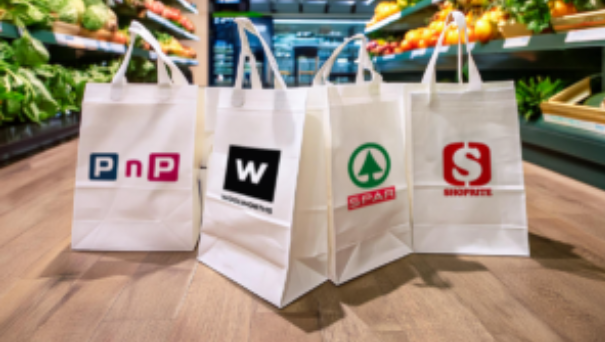Business
South Africa’s Grocery Retail Sector: A Battle for High-Income Shoppers and Healthier Options

The grocery retail competition in South Africa is heating up as major players shift focus towards high-income earners, with trends pointing to growing demand for online convenience, premium brands, and healthier food options. According to McKinsey & Company’s 2024 State of Grocery Retail in South Africa report, these factors represent key strategies for success in capturing the country’s wealthier consumers.
Rising Demand for Premium Online Grocery Shopping
Despite strong demand for discount retailers, McKinsey’s report reveals a growing trend among affluent shoppers towards online grocery channels. Since 2019, online grocery sales in South Africa have increased by an impressive 54% annually, reaching R23 billion in 2023. This growth is expected to continue as interest rises and market penetration remains low.
McKinsey’s 2024 consumer survey also shows that 26% of South African consumers plan to increase their online grocery shopping this year, outpacing global trends where interest has plateaued. Convenience is a significant factor: 43% of consumers cite time savings as their primary motivation for online shopping, while 30% value the flexibility of shopping whenever they want.
South Africa’s largest grocery chains are leading this trend, with offerings like Checkers Sixty60, Pick n Pay ASAP!, Woolies Dash, and SPAR2U. Unlike many global markets, several South African online grocery services are already turning a profit, thanks to low operational costs and a growing high-income customer base.
Increasing Appetite for Premium and Healthier Products
While South Africans are under economic strain, their interest in premium products is rebounding. In 2024, 26% of lower-income earners and 37% of higher-income earners plan to buy premium food items—a significant jump compared to global markets, such as Europe, where only 8% of high-income consumers intend to increase premium purchases.
Trade Intelligence’s Corporate Retail Comparative Report reveals that Checkers has now surpassed Woolworths Food in market performance. With a R38.5 billion turnover across 268 stores—averaging R144 million per store—Checkers is outperforming Woolworths, which reported R22.4 billion across 369 stores, averaging R61 million per store. This shift is partly due to Checkers’ strategic push into premium grocery offerings, an area traditionally dominated by Woolworths.
The Growing “Food-to-Go” Market
The “food-to-go” market, including ready-to-eat meals and takeaway options, has been expanding rapidly. Between 2017 and 2023, this segment grew at a 46% compound annual growth rate (CAGR), outpacing the overall grocery category. This trend is expected to continue, with projections showing an 8% CAGR from 2023 to 2028, compared to 5% for the broader grocery sector.
As more workers return to offices post-pandemic and lifestyles become busier, grocery retailers are seizing the opportunity to expand their food-to-go offerings. This shift allows them to compete with food service providers and retain market share in a rapidly changing landscape.
Health-Conscious Consumers on the Rise
Healthier and organic foods are becoming increasingly popular in South Africa, with 70% of high-income and 60% of low-income consumers planning to prioritize healthier eating in 2024. These numbers have grown from 65% and 54% in 2023, respectively, highlighting a strong shift towards nutrition.
Younger consumers, particularly Gen Z and millennials, show a higher preference for healthy and organic options compared to older generations. McKinsey’s survey found that 53% of high-income and 55% of low-income consumers are willing to pay above the market average for high-quality, fresh produce. Similarly, 52% of high-income and 57% of low-income consumers are prepared to pay extra for healthier food choices.
Despite this trend, there is less enthusiasm for products from smaller local stores, with only 28% of high-income and 29% of low-income consumers willing to pay more for them.
Navigating the New Grocery Landscape
The battle for South Africa’s high-income grocery shoppers is intensifying, with demand for convenience, premium products, and healthier options driving growth. As competition grows, grocery retailers have a window of opportunity to capitalize on these trends, innovate their offerings, and strengthen their market positions by targeting health-conscious, high-income consumers who prioritize both quality and convenience.















